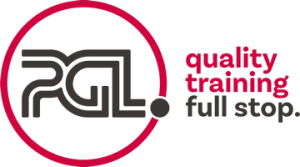What Does a Good Site Audit Look Like in Construction?
The Importance of Site Audits
Site audits play a crucial role in maintaining safety, compliance, and operational efficiency in the construction industry. Conducted regularly, they ensure that standards are upheld, risks are identified, and corrective measures are implemented promptly. A well-executed audit:
- Ensures Compliance: Verifies adherence to legal requirements, including health and safety standards.
- Enhances Safety: Identifies risks and mitigates potential accidents.
- Promotes Efficiency: Ensures that resources are used effectively and tasks are completed on schedule.
- Improves Reputation: Demonstrates a commitment to quality and safety, which can strengthen client trust and confidence.
Characteristics of a Good Site Audit
A high-quality site audit is thorough, objective, and actionable. Key characteristics include:
- Preparation: Before visiting the site, review relevant documents, including project plans, risk assessments, and method statements (RAMS).
- Clear Objectives: Define the purpose of the audit—whether it’s to check compliance, assess progress, or investigate a specific concern.
- Comprehensive Checks: Evaluate all aspects of the site, including safety measures, work practices, equipment condition, and environmental considerations.
- Engagement: Communicate with workers and supervisors to gather insights into on-site practices.
- Documentation: Record findings systematically, including photographs and notes, to provide clear evidence.
- Actionable Feedback: Highlight issues and suggest practical solutions, ensuring corrective actions are implemented.
Conducting a Manual Site Audit
Traditional, manual site audits remain a reliable approach, especially for smaller projects. To conduct an effective manual audit:
- Use a structured checklist to ensure consistency and thoroughness.
- Carry a notebook and camera to document observations and evidence.
- Engage with site personnel to verify compliance and gather feedback.
Leveraging Digital Tools for Site Audits
Technology has revolutionized site audits, offering efficiency and accuracy. Several apps and platforms streamline the process, including:
- iAuditor: A tool for creating custom checklists, capturing photos, and generating reports in real time.
- PlanGrid Build: Integrates audit data with project plans and facilitates collaboration among stakeholders.
- Procore: Offers comprehensive construction management features, including site inspections and safety tracking.
- Fieldwire: Enables site audits, task management, and team coordination on a single platform.
Common Issues Identified During Site Audits
Even well-managed sites can face challenges. Common findings include:
- Poor housekeeping, leading to trip hazards.
- Inadequate PPE compliance among workers.
- Missing or outdated safety signage.
- Improper storage or handling of hazardous materials.
- Faulty or poorly maintained equipment.
Conclusion
A good site audit is an essential component of effective construction management. By combining thorough preparation, comprehensive evaluations, and actionable feedback, audits help ensure that construction sites are safe, compliant, and efficient. Whether conducted manually or using digital tools, the key is to approach audits with diligence and a commitment to continuous improvement.
